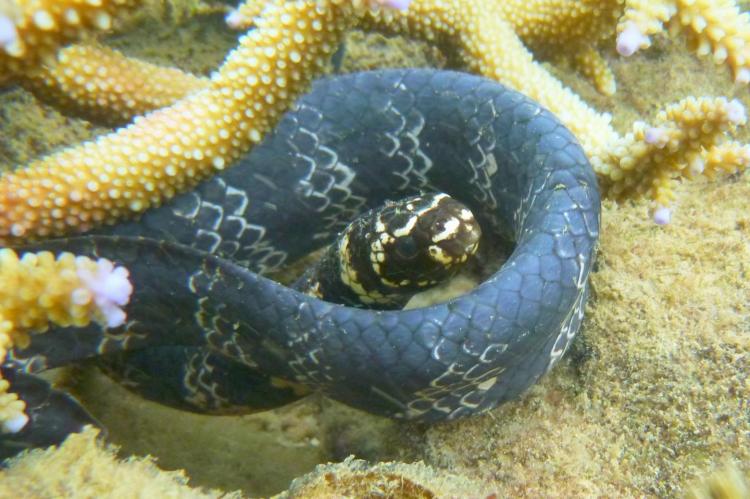Pollution affects sea snake colouration
A recent study has revealed that sea snakes living in industrial areas tend to have black skin while the skin of those living in coral reefs tend to have black-and-white bands or blotches.
Researchers have discovered that the black skin of turtle-headed sea snakes living in industrial or military areas enables their bodies to get rid of contaminants such as zinc and arsenic more effectively when they shed their skin.
This helps to explain a prevalence of the dark-coloured varieties in industrial areas.
Alternatively, the sea snakes living in the coral reefs had black-and-white bands and blotches on their skins.
In the study, the findings of which were recently published in the Current Biology journal, lead author Claire Goiran from the Labex Corail & Université de la Nouvelle-Calédonie and her colleagues compared the trace elements in sloughed skins of sea snakes from urban-industrial areas with the skins of sea snakes from other areas. They discovered that the skins from the former group of sea snakes had higher concentrations of trace elements.
When the trace element concentrations in darker and paler skins were compared, the darker skins were found to possess higher concentrations.
Professor Rick Shine, from Australia’s University of Sydney, described the findings as an example of rapid adaptive evolutionary change, saying that, “even on an apparently pristine coral reef, human activities can pose very real problems for the animals that live there.”


